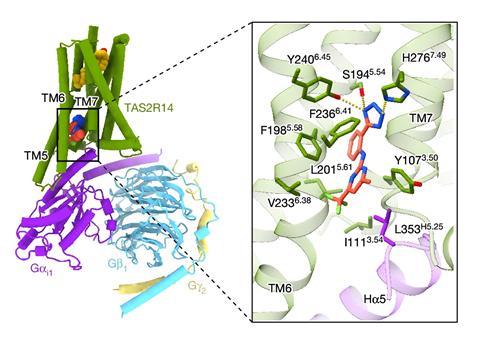Microscopy structures unveil the mechanism underlying bitter taste perception
Recent cryo-electron microscopy (cryo-EM) studies on a human taste receptor have provided insights into the mechanisms responsible for our ability to detect bitter flavours.
The perception of bitter tastes is intricately linked to interactions between more than 100 compounds and a group of 26 receptors known as type-2 taste receptors (TAS2Rs). However, a lack of structural data has hindered our understanding of these interactions.
Researchers from the US and China have now presented two cryo-EM structures of the human bitter taste receptor TAS2R14. This receptor is distributed across cell membranes in the tongue and various other human tissues, capable of recognising and binding to over 100 structurally diverse compounds associated with bitter flavours.
The newly revealed structures highlight the presence of two binding sites on the receptor: an allosteric site situated within the cell and an orthosteric site located on the extracellular part of the receptor. Notably, a hydrophobic amino-acid residue-surrounded tunnel connects these two sites.
In terms of the receptor’s structure, the researchers observed cholesterol occupying the orthosteric site, a compound commonly found in animal cell membranes. This finding suggests that the receptor may exist in a semi-active state, primed for activation by bitter compounds. Additionally, the similarity in chemical structure between cholesterol and bile acids raises the possibility of bile acids also binding to and activating TAS2R14.

Comparison with TAS2R46, the only other TAS2R structure previously elucidated, revealed distinct structural variations in TAS2R14. This indicates that different TAS2R2 receptors may have specific binding affinities for particular types of molecules.
Furthermore, the researchers noted that TAS2R14 is expressed in numerous tissue types, with concentrations in the cerebellum surpassing those on the tongue by 100 times. Future investigations aim to uncover the receptor’s role in cellular signalling beyond oral taste perception.
Read the full article here:
https://www.nature.com/articles/s41586-024-07253-y
